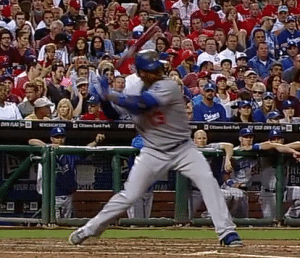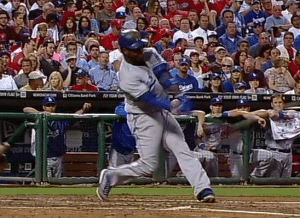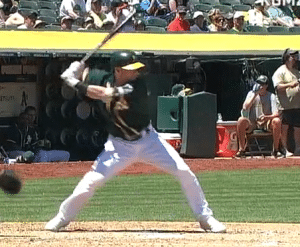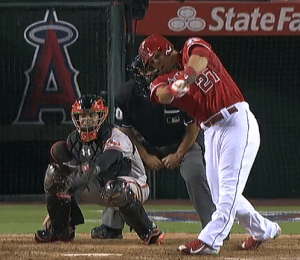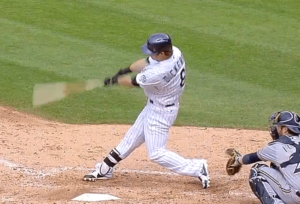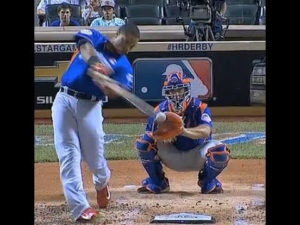Hanley Ramirez Hitting a Curveball Do’s & Don’ts
This post will clarify why the “Snapping Towel” concept is far superior than a hitter who “Sits Back.” An efficient swing uses the Un-Weighting Principal, or Forward Momentum. Basically, it’s a hitter getting a “head start”, and making an aggressive move towards the pitcher.
CLICK HERE to watch the Troy Tulowitzki Experiment and see how un-weighting can boost bat speed.
Most coaches, instructors, and even decent Major League hitters HATE what I’m about to tell you. They say, early head movement speeds up the pitch. They say, you can’t commit your body-weight to the front leg because you’ll be out in front of off-speed and breaking stuff.
This video blog post will REVEAL, they’re dead wrong:
- WHY the Snapping Towel?
- Importance of “getting shorter” in Fight Position, and
- How-to train crushing a curveball.
WHY the Snapping Towel?
Would you rather have head movement before or after front foot landing? The question isn’t IF the head is going to move during the swing, it’s when. Thanks to proprioception.
Imagine how you snap a towel…here’s the “Snapping Towel” effect applied to Hanley Ramirez’s 2013 homer to left field off a Cliff Lee cutter going 85 mph:
- Head moves forward and slightly down before landing,
- Floats (slight pause) right before his Free-Fall forward,
- Commits body-weight to front leg during Fight Position (landing), and then
- Effectively snaps back into a spine angle up and over the catcher (notice head DOES NOT move here).
Can Hanley Ramirez’s Fight Position get better? Sure! He’s not using Gravitational Forces like he can by flexing his front knee a little more at landing. I call this “getting shorter”. Which brings us to the next point…
Importance of “Getting Shorter” in Fight Position (landing)
Because Hanley Ramirez DOES NOT “get shorter” into the Fight Position, he compensates by reaching for the Cliff Lee cutter. Landing taller forfeits setting the pitch plane early. And a compensating shoulder angle on a low pitch (more parallel to ground) limits force production. It’s like letting the air out of a balloon.
But most importantly, in respect to hitting the curveball…
Getting shorter into the Fight Position also creates a defense mechanism to breaking and off-speed stuff. Jaime Cevallos calls it, in his book Positional Hitting, a “cushion” or “double cushion”. JK Whited of Baseball Rebellion calls it “pushing the pause button”.
How-To Train Crushing a Curveball
Here are my top ways to train a hitter to crush the curveball, like Hanley Ramirez. First of all, utilize the Break-It-Apart Drill to get hitters comfortable operating from a “paused” Fight Position. Use the Rule of Variance in one or a mix of these THREE ways:
- Timing – move pitcher’s L-screen up or back 10-20 feet from hitter after a round of five swings. OR keep L-screen where it’s at, and have two home-plates for hitter to move to between rounds,
- Plate Discipline – carve the plate up into inner or outer 2/3’s (green light to swing), and other 1/3 of the plate is where the hitter takes (red light). This is for a zero or one-strike approach.
- Mixed pitches – pitcher doesn’t tell hitter what’s coming. No pitch is off limits. Hitters, please wear helmets 😉
- Pitch Recognition – Dr. Peter Fadde’s interview post on this is HUGE, along with Perry Husband’s interview post on Effective Velocity.
#1 focuses on making adjustments to a change in speed (or reaction time). #2’s objective is looking for a specific pitch in a specific location (not recommended strategy in games until High School Varsity). #3 is the name of the game.


